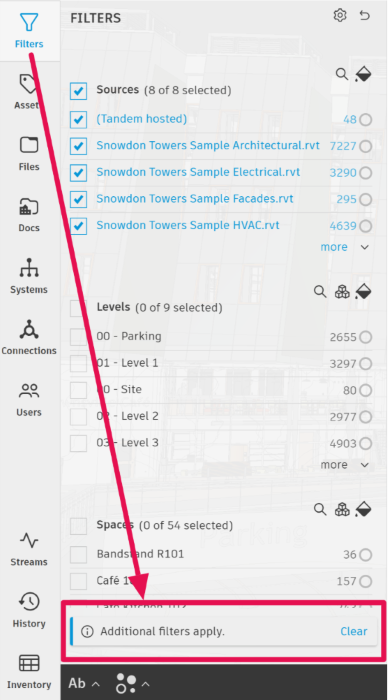Filters
Filters in Autodesk Tandem are a powerful tool for organizing, visualizing, and managing assets within a facility model.
By using the filters and parameters in Autodesk Tandem, you can easily manage complex data sets and visualize your facility models more effectively. This guide covers the basics, but you can continue to explore additional customization options to meet your project’s unique needs.
Navigating to the Filters Tab
To begin, navigate to the Filters tab, which allows you to isolate components and modify their visual appearance using different parameters. Users will notice that when they hover the cursor over the available filter, the elements in the viewer will highlight yellow.
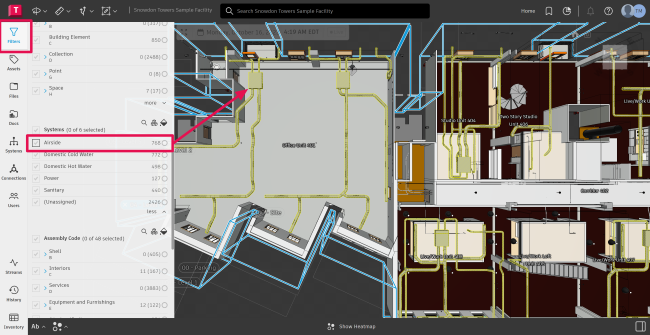
Customizing Parameter Selection
When models are loaded into Autodesk Tandem, the filters panel is automatically populated with a default set of model properties. These properties are consistent across all models.
You can customize the set of parameters used for filtering to better suit your needs.
To add or remove parameters:
Click the Gear icon in the upper right corner of the panel to open the Edit Filters dialog.
From here, you can select parameters from three categories:
a. Standard Parameters: Predefined parameters available by default.
b. Asset Parameters: Custom parameters applied through your facility template.
c. Design Parameters: Parameters incorporated from the source models.
Use the Search Properties field to find specific parameters.
Click the Plus (+) icon to add parameters to your selected list.
Rearrange the parameters by dragging them up or down in the list.
Click Update to apply these changes to the filters panel.
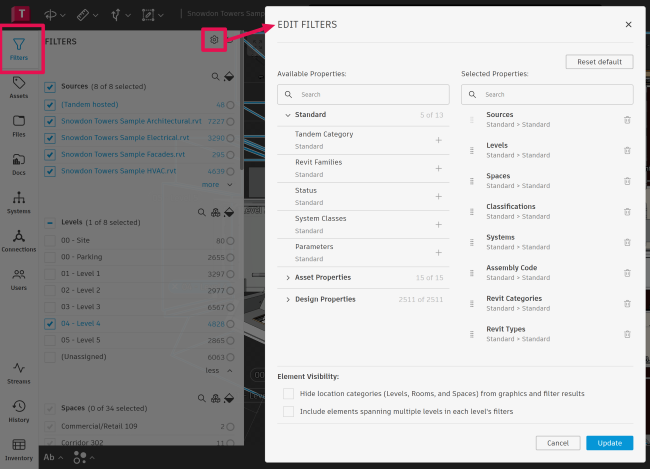
Filtering Parameters for Assets and Spaces
As you work on your model, you can apply additional parameters (Asset Properties) to assets and spaces to further refine your data views. These parameters can be filtered and visualized based on your requirements.
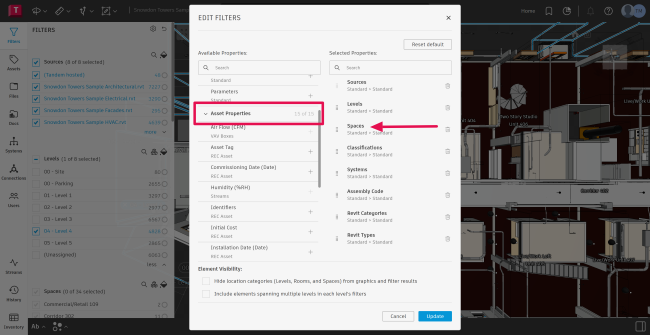
To filter by Space, make sure the Spaces filtering option is available by checking the Edit Filters menu.
To apply a filter, click the row that corresponds to the value you want to filter. Note: Filters are applied sequentially, from top to bottom. Each filter you apply will further constrain the available property values below.
For example, you might limit your list to 'Turnover Date' and then by certain Spaces.
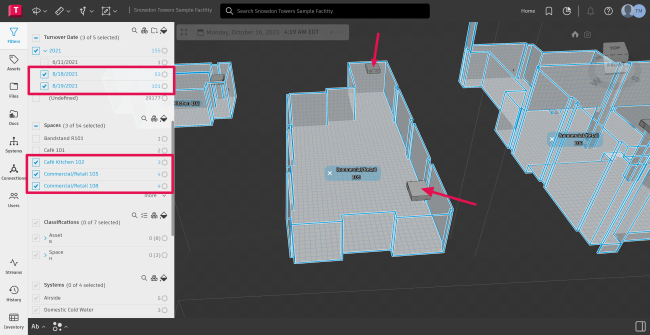
Visualize Parameters:
You can color-code and cluster items based on any selected parameter for better visualization.
To toggle filters and visualizations, click the relevant icons to turn filters or color coding on and off. Dynamically switch between parameters as needed.

Picture is of what a viewer can look like when color coding is turned on and applied by Assembly Code.
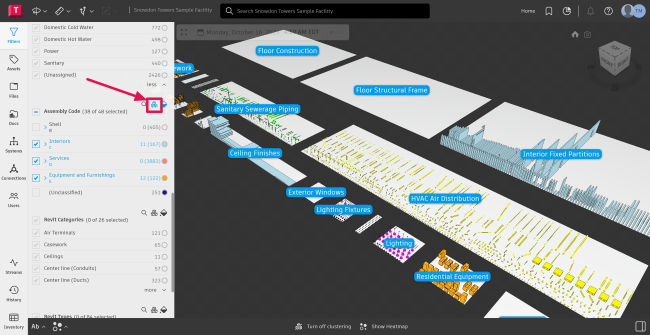
The example pictured above shows clustering of elements by Assembly Code.
Customizing Color Coding
Custom color coding helps you easily identify different parameters in your model.
To customize color coding:
- Click the circle on the right side of any line item to open the Edit Colors dialog.
- Adjust the colors as needed and click Save. Your preferences will be stored for that specific parameter.
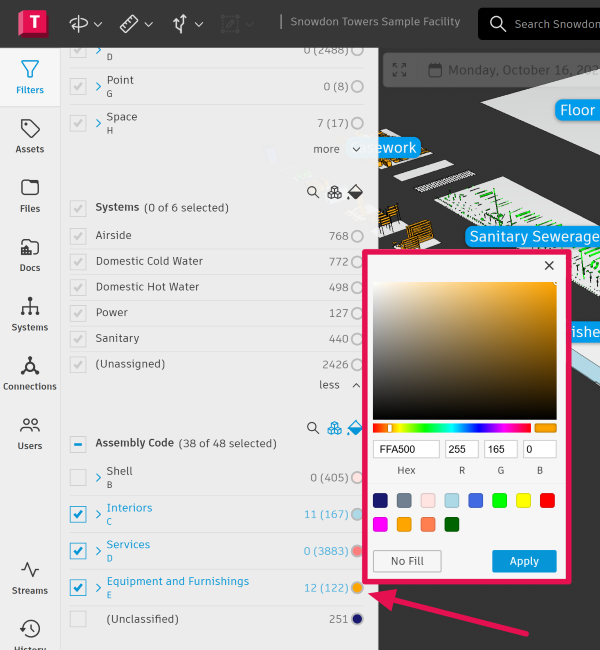
Data Bucketing
Numeric Bucketing distributes grouping for numeric data, making it easier for users to interact with complex datasets in Tandem. Data Bucketing groups elements by numerical values and date values, enabling fast and meaningful filtering, colorization, and visualization.
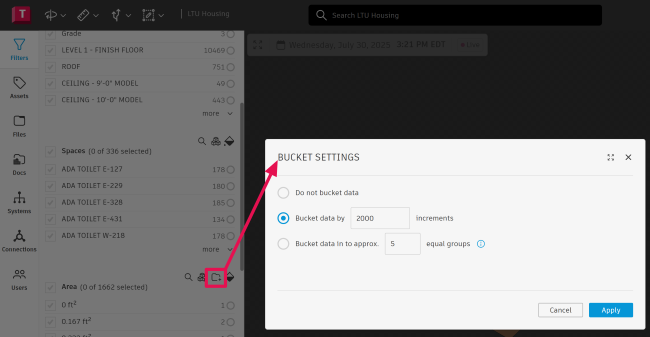
When applying numeric bucketing, users see trends, ranges, and groupings across their assets. In the picture below, we have an example of the Revit Category Rooms selected, the Area filter applied, and then the area values bucketed into five equal groups. The color-coding was applied to the five groups, which is displayed in the viewer.

Clearing and Resetting Filters
To clear the filters you’ve applied, simply click the Revert icon in the upper right corner of the panel. This will reset your view to show all data without any active filters.
If you want to restore the filters to their default settings, click the Reset Default option.
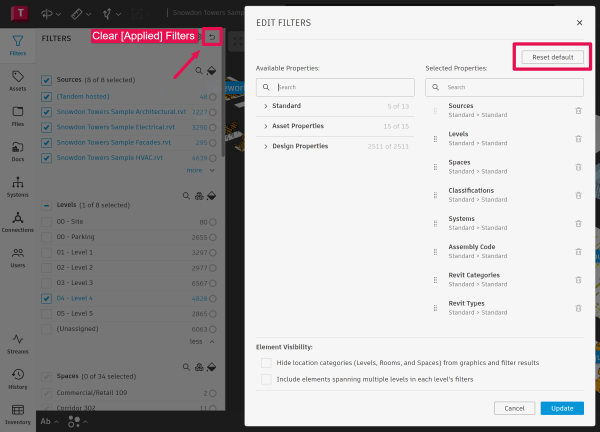
Users can see if more elements have been manually hidden in the viewer while using the filter panel. Users will see a message at the bottom of the panel, and clicking Clear will bring any further hidden elements back into view.
